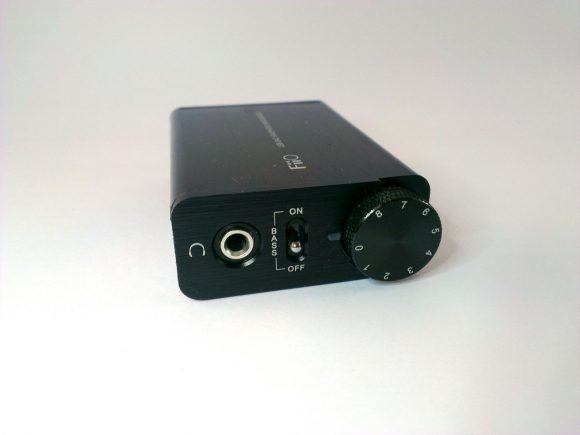
There’s nothing not to like about Fiio’s newly launched E10 DAC/amplifier. It joins Fiio’s line of many other DAC and amplifier products that are relatively cheap yet sporting good quality construction and sound quality. While some other reviewers managed to get a pre-release sample, which may possibly be slightly different from the final production version, this is the real for-sale thing.
I was originally considering the Fiio E7. My previous DAC (GoVibe Vulcan Mini) stopped working one day and it was painful hearing direct from my MacBook Pro. The E7 seemed like a reasonably suitable replacement. However, I’m not a fan of volume up-down buttons which the E7 had. I really much prefer a volume control knob. I also don’t need to have an OLED screen or other funky features that the E7 has. But ultimately, it was the lack of volume control knob that pushed me to find alternatives. That’s when I noticed the E10 had become available.
The E10 comes in a simple, plain, yet elegant tin box. Open it up and the E10 is revealed within. The included USB cable is found behind the cushioning plastic that the E10 sits in.
The E10 is simple. On the front, you’ll find the 3.5 mm headphone jack, a toggle for bass boost (+3 dB when on), and the volume control knob. There is a blue LED indicator light next to the volume control knob to point to the current setting. It can also serve as a power indicator.
On the back, there is a mini-USB input, a coaxial output jack for digital output, and a 3.5 mm line out jack. The only way you can deliver sound to the E10 is via USB, so there’s no need for a battery of separate power supply input, because the power can come from USB.
There is no line input to the E10. I had initially thought it odd that the E10 didn’t include a battery or power supply input, until I realized from published specifications that there was no line input. It’s a non-issue anyway if your purpose is to connect it as an external DAC to your computer.
The underside of the E10 has just one switch: gain control. Select high gain when you connect higher impedance headphones.
There is no on-off switch, so the blue LED indicator mentioned before is the only way to know if the E10 is powered on or not.
Eight rubber feet were included in the box. Feel free to use them if you think the E10 needs some air separation from the surface it sits on. The brushed metal casing of the E10 is rugged and very well built. The volume control knob has a solid, premium feel to it.
What about sound quality? Very very good! The E10 simply makes music fuller and more complete. The sound is very well-balanced and very clear. There is no discernable hiss or noise, at least not at slightly-higher-than-normal volume levels. It seems like the E10 just makes good music sound better. Although it seems impossible to turn a pair of crappy headphones into great sounding ones, the E10 almost seems to do that. Alright, that would be a bit of an exaggeration, but the E10 really does enhance your listening pleasure.
If you love added bass, the bass boost gives you +3 dB through the E10’s in-built bass boosting circuit. The bass is delivered with a strong fat punch, although, I feel, some clarity in the bass got lost. Just some. It’s still pretty good. If you have a not-so-good pair of headphones that is lacking in the bass department, the E10’s bass boost could help make up for it.
The E10 handles sample rates up to 96 kHz / 24 bits, and drives headphones from 16 ohms to 300 ohms. It uses the Wolfson WM8740 DAC chip, AD3897 headphone amplifier, and Tenor 7022 USB receiver.
Definitely recommended. If you’re still listening to music straight out of your notebook or PC, you don’t know what you’re missing.
